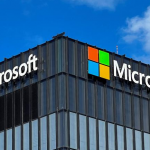More than a hundred new flaws were recently discovered in Microsoft 365 apps
Cybersecurity researchers from Zscaler have discovered more than a hundred vulnerabilities in Microsoft 365 that were introduced with the addition of SketchUp into the cloud productivity suite.
To make matters worse, they claim to have managed to bypass the patches Microsoft released to address these flaws.
Zscaler’s ThreatLabz team has published a report claiming to have found 117 vulnerabilities in Microsoft 365 apps, all due to the productivity suite supporting SketchUp 3D files – SKP.
Bypassed solutions
In essence, the program allows users to add 3D models to Microsoft documents and was first introduced in August 2000. Last year, it was integrated into Microsoft 365’s Office 3D component.
By reverse engineering the Office 3D components, the researchers discovered that Microsoft used multiple SketchUp C APIs to allow the programs to parse an SKP file. That led them first to the discovery of 20 flaws, and then to another 97 flaws. Most are heap buffer overflow, out-of-bounds write, or stack buffer overflow vulnerabilities.
Microsoft placed all of them under a “remote code execution” (RCE) umbrella and grouped them into three CVEs: CVEs: CVE-2023-28285, CVE-2023-29344, and CVE-2023-33146. All three are labeled “high severity” with a severity score of 7.8.
Speaking to TechTarget, Zscaler’s senior principal security researcher Kai Lu said the company found no evidence of the flaws being exploited in the wild. He added that could change at any time.
“There is a possibility that a skilled threat actor can discover and weaponize the same (or similar) vulnerabilities,” Lu told the publication. “The decision to temporarily disable support for SketchUp will prevent exploitation for versions that have been patched and limit the potential impact.”
Microsoft disabled the support for SketchUp, SC Media added, because the researchers managed to work around the patches it published.
“Microsoft created a patch to address the vulnerabilities that ThreatLabz was able to bypass,” the ZScaler blog reads, without going into further detail. The company did say that the report was just the first in a series, so we can expect more details in the coming days.
Microsoft, on the other hand, told TechTarget that its customers “have been protected since June when this feature was temporarily disabled” and added that the customers should view SketchUp’s status on its dedicated page.




